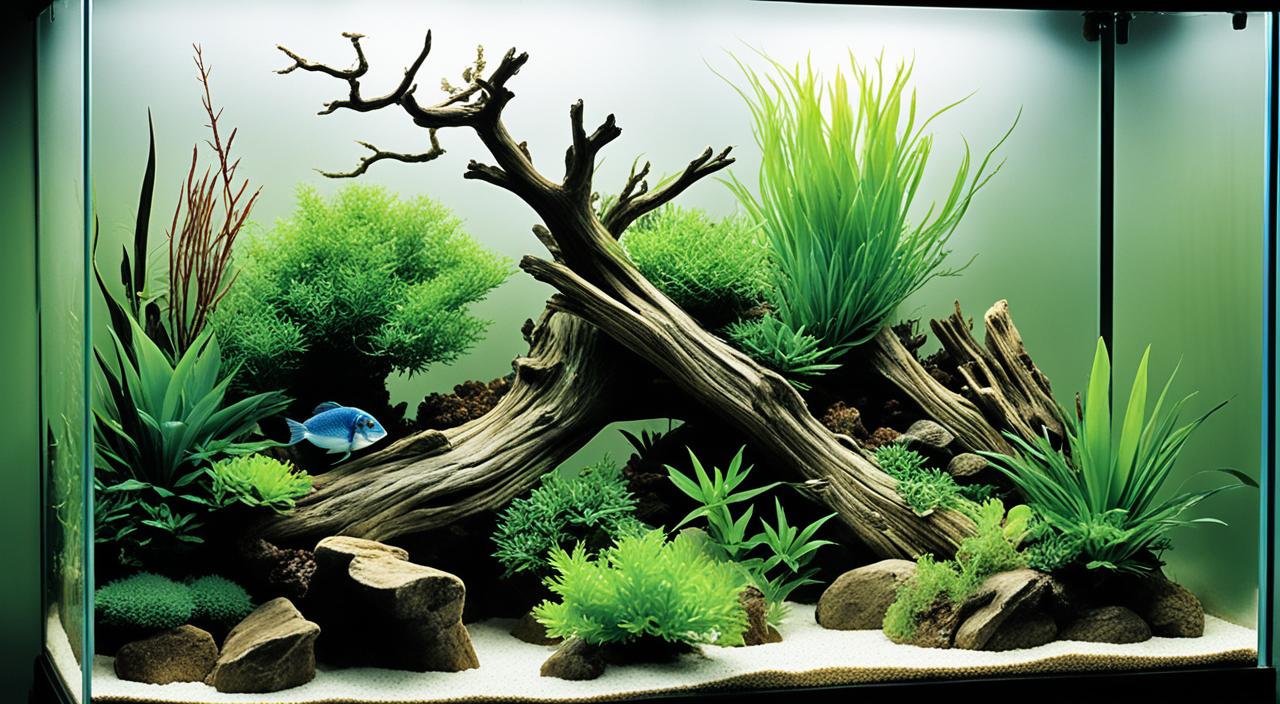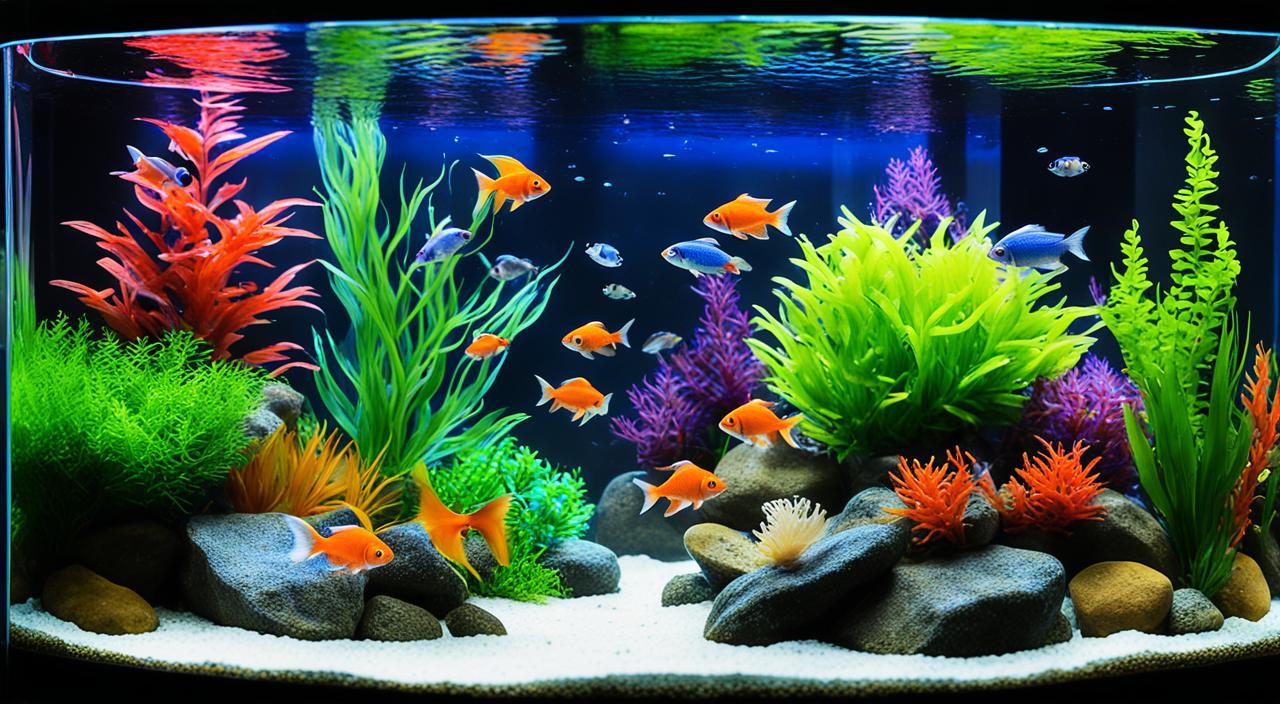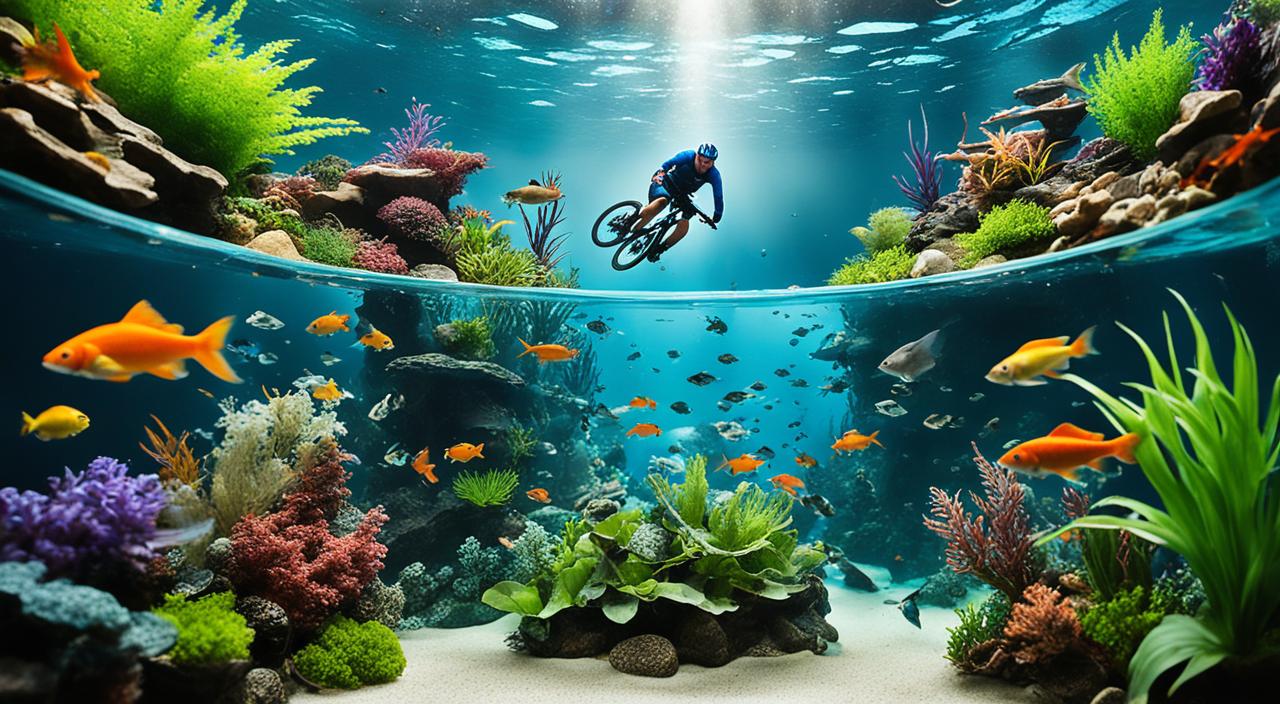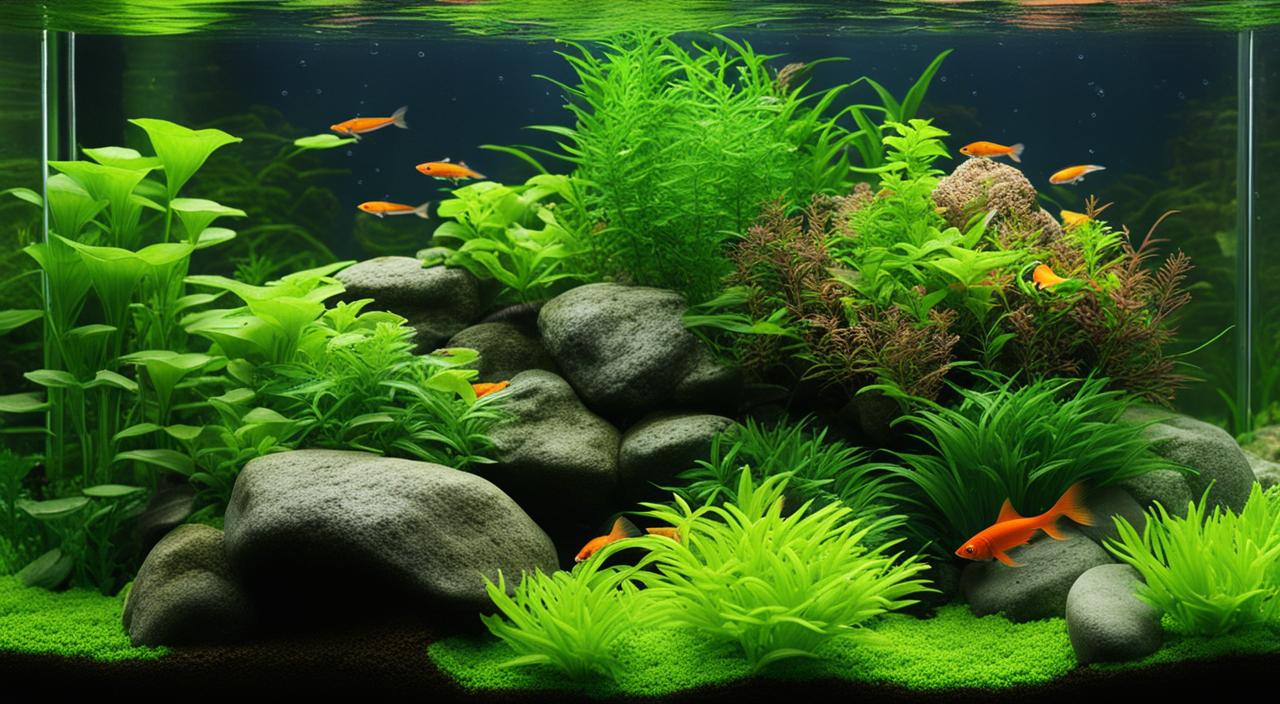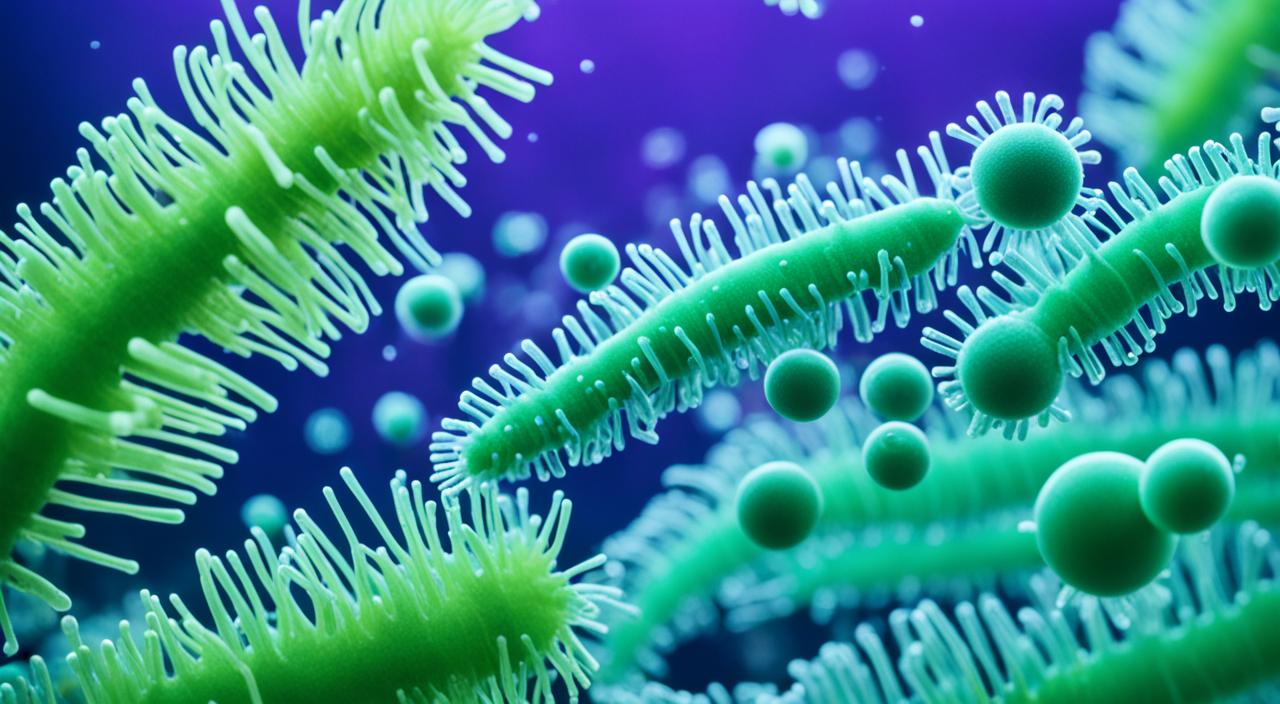When cycling an aquarium or fish tank, it’s essential to be mindful of the chemicals used in the process. The cycling process involves the establishment of beneficial bacteria that break down waste and toxins, ensuring a healthy environment for the fish. However, certain chemicals can be harmful and pose a risk to the fish and the overall ecosystem.
Understanding which chemicals to avoid and adopting eco-friendly and sustainable cycling practices can create a safer and more environmentally friendly aquarium experience. Let’s explore the chemicals to avoid in cycling and highlight the importance of safe chemical management.
Key Takeaways:
- Be aware of harmful chemicals in cycling to ensure your fish’s and aquatic ecosystem’s health and safety.
- Avoid toxic chemicals like ammonia and nitrites to prevent stress or harm to the fish.
- Opt for eco-friendly cycling processes and sustainable chemical usage to minimize environmental impact.
- Use natural alternatives to chemical additives, such as beneficial bacteria supplements, for a healthier aquarium.
- Monitor water quality, maintain proper filtration, and perform regular water changes for a balanced cycling process.
The Dangers of Toxic Chemicals in Cycling
When cycling an aquarium, it is crucial to be aware of the dangers of toxic chemicals. By avoiding these harmful substances, we can ensure the health and safety of our fish and contribute to a more environmentally friendly cycling process.
One of the main toxic chemicals to avoid in cycling is ammonia. High levels of ammonia can lead to severe stress and even fish death. Nitrites are another dangerous chemical that can be present in the cycling process. Excessive nitrites can disrupt the oxygen-carrying capacity of fish, causing health problems.
Additionally, certain water conditioners and treatments may contain harmful substances that can harm aquatic life. It is essential to carefully read labels and choose environmentally safe products and free from toxic chemicals.
Toxic chemicals pose a risk not only to the fish but also to the overall aquatic ecosystem. They can disrupt the delicate balance of the tank, harm beneficial bacteria, and negatively impact the water quality. Avoiding these chemicals can contribute to a healthier and more sustainable environment for our aquatic friends.
Reducing chemical waste in the cycling process is equally important. By minimizing the use of unnecessary chemicals and opting for eco-friendly alternatives, we can significantly decrease the negative impact on the environment. This benefits the immediate aquatic ecosystem and contributes to the larger goal of conserving and preserving our natural resources.
The Importance of Chemical Management
Proper chemical management is essential in maintaining a balanced and thriving fish tank. Regular testing with an aquarium test kit allows for the monitoring and controlling of chemical levels, ensuring the well-being of the fish and the overall aquatic ecosystem.
By understanding the chemical parameters and making necessary adjustments, we can create an environment that promotes the growth of beneficial bacteria while minimizing the risk of toxic chemical build-up. Effective chemical management helps to prevent imbalances and ensures a healthier cycling process.
Avoiding toxic chemicals and implementing eco-friendly practices is critical when cycling an aquarium. We can create a sustainable and harmonious aquatic ecosystem by prioritizing the health and safety of our fish and the environment.
Eco-Friendly Cycling Best Practices
When cycling an aquarium, it’s essential to prioritize eco-friendly and sustainable practices. Following these best practices can minimize harmful chemicals and create a more environmentally conscious cycling process.
- Choose natural or organic alternatives to chemical additives: Instead of synthetic treatments, opt for beneficial bacteria supplements or other natural additives. These alternatives can promote a healthier ecosystem in your aquarium.
- Consider fishless cycling or hardy fish species: Fishless cycling, where no live fish are used, or using hardy fish species can reduce stress and harm to the fish. It also allows the cycling process to occur without the risk of introducing harmful chemicals to the tank.
- Monitor water quality regularly: Regularly test the water parameters in your aquarium to ensure they are within the appropriate range. This includes testing for ammonia, nitrites, and nitrates. Staying on top of water quality can prevent imbalances and maintain a healthy cycling process.
- Ensure proper filtration: A sound filtration system is essential in cycling as it helps remove waste and toxins from the water. Regularly clean and maintain your filters to optimize their effectiveness and keep the water quality high.
- Perform regular water changes: Regular water changes help refresh the tank and replenish essential minerals and nutrients. It also aids in removing excess chemicals or waste buildup. Aim for a 10-20% water change every one to two weeks.
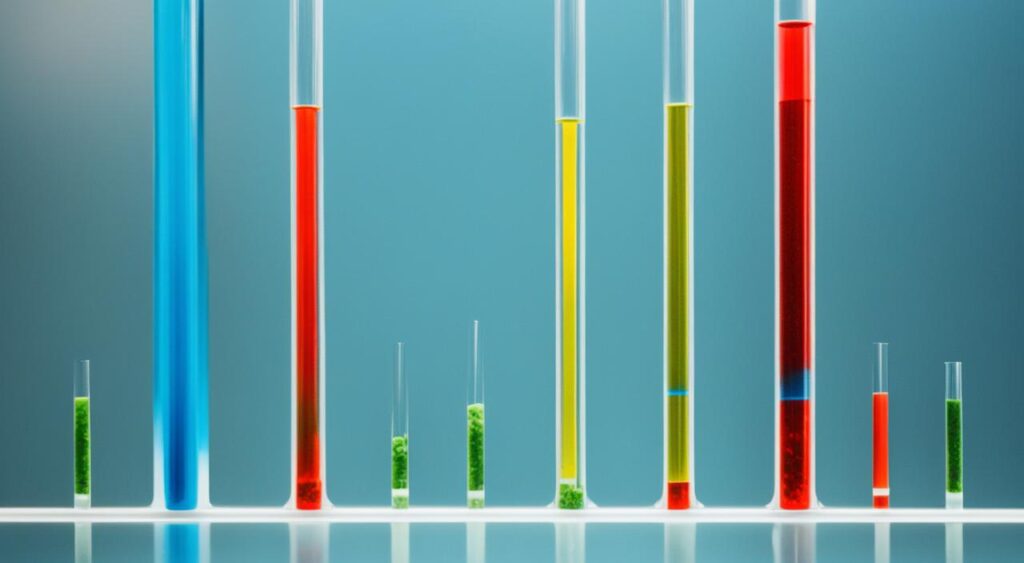
By adopting these eco-friendly cycling best practices, we can create a sustainable aquarium environment that promotes the well-being of the fish and the overall ecosystem. Let’s prioritize sustainable chemical usage and take steps towards a greener cycling process.
Importance of Chemical Waste Reduction in Cycling
Chemical waste reduction is crucial in maintaining a healthy and balanced aquarium ecosystem. By minimizing unnecessary chemicals and adopting eco-friendly practices, we can significantly reduce the amount of chemical waste produced during the cycling process. This not only benefits the fish and other aquatic organisms but also helps to protect the overall environment.
Incorporating sustainable chemical usage practices is critical to reducing chemical waste in cycling processes. Instead of relying on synthetic treatments, consider using natural additives and alternatives. These eco-friendly options can provide nutrients and supplements without adding unnecessary chemicals to the tank.
We contribute to a safer and more environmentally friendly cycling experience by prioritising chemical waste reduction. Not only do we create a healthier habitat for our fish, but we also help to preserve the delicate balance of the aquatic ecosystem. Sustainability should always be at the forefront of our cycling practices.
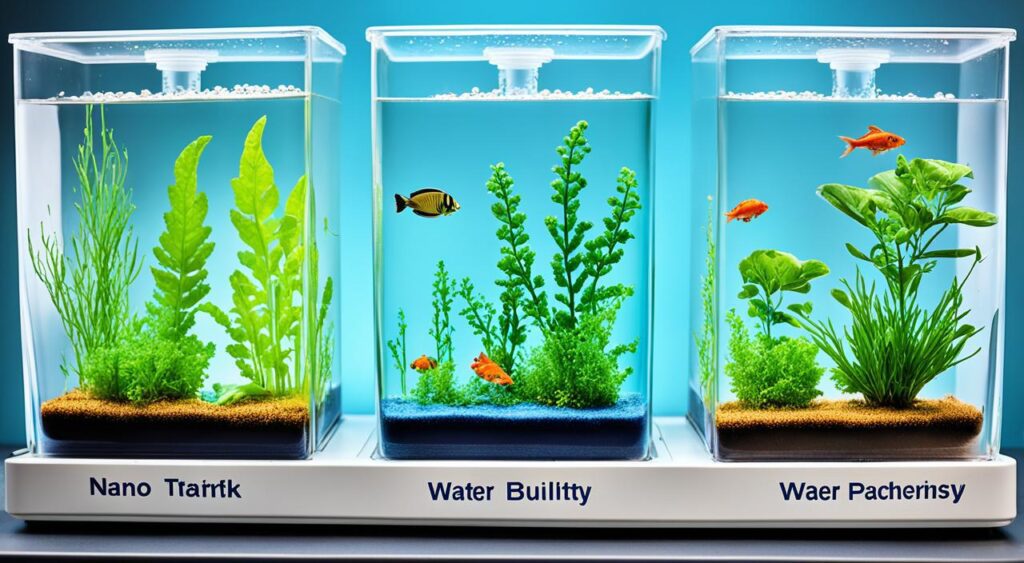
Benefits of Chemical Waste Reduction
- Protects fish and aquatic organisms from harmful chemicals
- Promotes a healthier and more sustainable aquarium environment
- Preserves the delicate balance of the aquatic ecosystem
- Reduces the impact on the overall environment
By adopting eco-friendly cycling processes and sustainable chemical usage, we can minimize our ecological footprint and create a better future for our aquatic friends.
The Role of Chemical Management in Cycling
Effective chemical management is essential in maintaining a prosperous and healthy cycling process. By carefully monitoring and controlling the levels of chemicals in the tank, such as ammonia, nitrites, and nitrates, we can create an environment that promotes the growth of beneficial bacteria while minimizing the risk of toxic chemical buildup.
Regular testing with an aquarium test kit is a crucial step in chemical management. It allows us to identify any imbalances or potential issues before they become problematic. Understanding the chemical parameters and making necessary adjustments can ensure a more balanced and sustainable cycling process.
Striving for eco-friendly and sustainable chemical management practices is not only beneficial for the fish but also for the overall aquatic ecosystem. By minimizing the use of harmful chemicals and opting for more natural alternatives, we can reduce our impact on the environment. This includes using organic additives and reducing reliance on synthetic treatments. We can create a safer and more environmentally friendly cycling experience by prioritising sustainable chemical usage.
FAQ
What are the harmful chemicals to avoid in cycling an aquarium?
The harmful chemicals to avoid in cycling an aquarium include ammonia, nitrites, and certain water conditioners and treatments that may contain harmful substances.
Why is it important to avoid toxic chemicals in cycling?
It is important to avoid toxic chemicals in cycling to prevent stress, harm, or even death to the fish and to maintain a healthy and balanced aquatic ecosystem.
What are some eco-friendly cycling best practices?
Some eco-friendly cycling best practices include using natural or organic alternatives to chemical additives, choosing cycling methods that prioritize the well-being of the fish and the environment, and regularly monitoring water quality and performing regular water changes.
Why is chemical waste reduction important in cycling?
Chemical waste reduction in cycling is important to maintain a healthy and balanced aquarium ecosystem, protect the fish and other aquatic organisms, and minimize the overall environmental impact.
What is the role of chemical management in cycling?
Chemical management in cycling involves monitoring and controlling the levels of chemicals such as ammonia, nitrites, and nitrates in the tank to create an environment that promotes the growth of beneficial bacteria while minimizing the risk of toxic chemical build-up.

